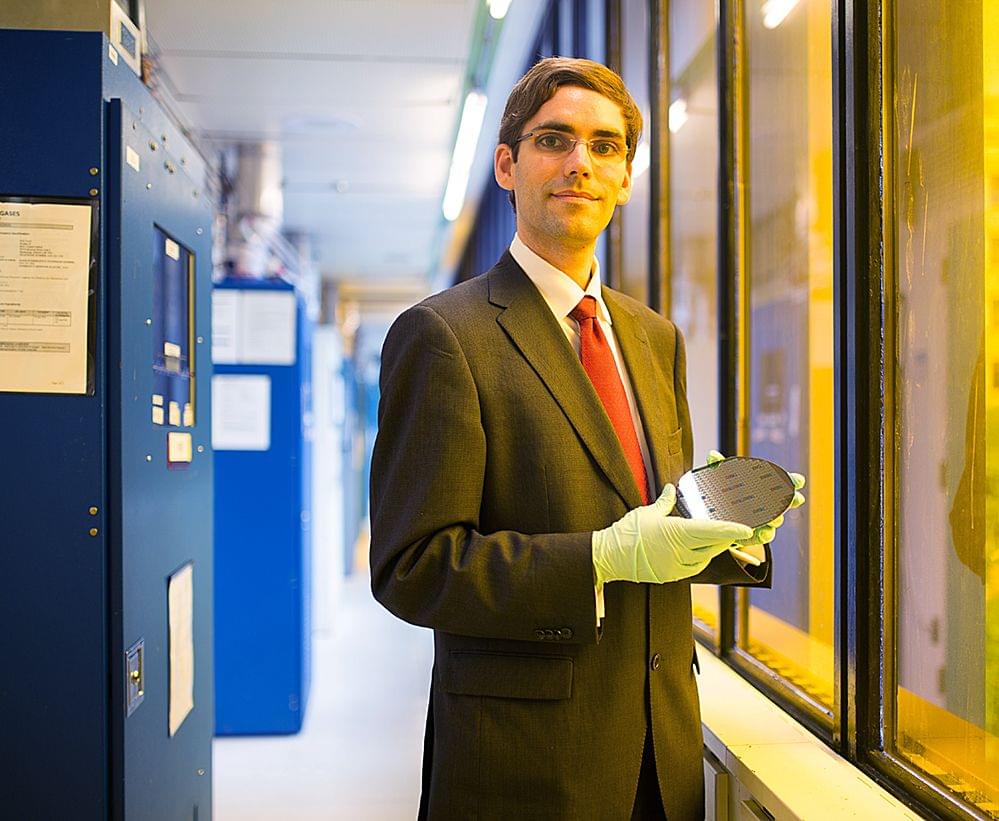Architect Neri Oxman, creator of “material ecology,” explains how silkworms, shrimp shells and insect exoskeletons could help shape the city of the future.


Rich Heimann explores how the philosophy of mind and consciousness has affected AI research.

In 2006, when Tomás Palacios completed his PhD in electrical and computer engineering at the University of California at Santa Barbara, he was torn between taking a job in academia or industry.
“I wanted to make sure that the new ideas that we were generating could find a path toward society,” says Palacios, the newly tenured Emmanuel E. Landsman Associate Professor of Electrical Engineering and Computer Science at MIT. “In industry, I was sure that would happen; I was not sure how it would work in academia.”

“Conscious processing is overestimated,” lead author Michael Herzog said in a press release. “You should give more weight to the dark, unconscious processing period. You just believe that you are conscious at each moment of time.”
When we ride a bike, Herzog mused, our bodies automatically make minute adjustments to keep from falling over without consciously thinking about it. But even with his team’s two-step model, some of the secondary questions surrounding the ancient debate remain. Questions about how long these discrete moments of consciousness last, or how they differ among people, don’t have answers.
“The question for what consciousness is needed and what can be done without conscious? We have no idea,” Herzog said.



MILLIONS of owners of the Samsung Galaxy smartphone face a security threat.
Those with an Android version 9 through 12 are at risk.
Researchers at Kryptowire published a report detailing how they discovered a serious vulnerability in the pre-installed Phone app across multiple models that could enable a hacker to take control of someone’s phone, Forbes reported.

NASA astronaut Doug Hurley reminisced on what it was like working with SpaceX CEO Elon Musk before he flew on a historic flight to space and back in 2020.
In an interview with Fox News, Hurley spoke about his impressions of Musk, the billionaire space race, and a new Netflix documentary, “Return to Space” which follows Hurley’s journey and that of fellow astronaut Bob Behnken as they embarked on the first human SpaceX mission to the International Space Station.
In May 2020, Musk and SpaceX made history after the company successfully launched two astronauts into space aboard a Crew Dragon spaceship. Shortly after, the astronauts’ ship docked at the International Space Station.


There are ways around this, but they don’t have the exciting scalability story and worse, they have to rely on a rather non-tech crutch: human input. Smaller language models fine-tuned with actual human-written answers are ultimately better at generating less biased text than a much larger, more powerful system.
And further complicating matters is that models like OpenAI’s GPT-3 don’t always generate text that’s particularly useful because they’re trained to basically “autocomplete” sentences based on a huge trove of text scraped from the internet. They have no knowledge of what a user is asking it to do and what responses they are looking for. “In other words, these models aren’t aligned with their users,” OpenAI said.
Any test of this idea would be to see what happens with pared-down models and a little human input to keep those trimmed neural networks more…humane. This is exactly what OpenAI did with GPT-3 recently when it contracted 40 human contractors to help steer the model’s behavior.